Somua MCG
 1932-1940, 657 (MCG-5) 315 (MCG-4 & 11), 440 ARV.
1932-1940, 657 (MCG-5) 315 (MCG-4 & 11), 440 ARV.

The Somua MCG is a semi-tracked artillery tractor, designed for the French Army by the Société d'outillage mécanique et d'usinage d'artillerie (SOMUA) from 1928, in service from 1931. It was developed at first as a recovery tractor, then declined into a main artillery tractor and ammuntion supply vehicle (MCG 5/MCGS 4/11), with 657 MCG-5, 315 MCG-4 & 11 and 440 ARV produced until 1940. It was used during the Second World War by France, Greece (produced there) and many reused later by Germany, some declined as armoured combat variants by Baukommando Becker in 1943-44.
Genesis of the MCG
About SOMUA
The Société d'outillage mécanique et d'usinage d'artillerie (SOMUA) was initially founded in 1861 by Étienne Bouhey under the name "Bouhey Works Company", incorporated in 1894 to produce machine tools. In 1914, Bouhey Works merged with the Farcot factories in Saint-Ouen and Champigneul factories in Paris, to create a new entity under the acronym SOMUA, soon under control of Schneider et Cie and moved to Saint-Ouen, where a major factory was created fro scratch. During the war, it produced artillery parts for Schneider, but also trucks, tractors, and eventually armored vehicles, including the Schneider CA1 tank (better known as the Schneider CA1, first French Tank).
In 1930, SOMUA distributed three-axle trucks with forward half-cabs and diesel engines, payloads from 10 to 13 tons and soon arrved a lighter range, with 5-8 tons payloads with gasoline engines. In 1936, SOMUA produced railcars such as the XS 1 to 11 whic sported an articulated assembly of two elements, between a short power unit and long trailer with a bellows interchange. In 1939, SOMUA offered cab-over trucks with 2-3 axles, gasoline or diesel engines. With the rearmament of Germany, SOMUA obtained contracts for the S.35, possibly the best cavalry tank of its day.
In WW2, truck production ceased but in 1944, the company developed under Swedish license from Hesselman, an original rigid truck called the JL 12, equipped with a windshield on each side of the radiator grille and a four-cylinder multi-fuel engine. In 1946 SOMUA was forcibly fused into the Générale Française Automobile (GFA) with Willème and Panhard and ceased to exist as a fully independent entity but continued to produce trucks under its own name in the 1950s such as the JL 19 and MTP.
Development
In 1927, the French Army looked for ways t replace horse-drawn systems for artillery, and create a modern mechanized units. There were attempts by Citroen with the Kégresse system for a semi-tracked chassis, and soon SOMUA also looked after such prototypes, creating the Somua-Kégresse. Two prototypes were proposed and tested in 1927 par the
Armée de terre but only as artillery regimental recovery tractor. I however did ot matched any official requirement and was not adopted at that stage.
In 1930 as part of new tractor program for towing the Schneider 155mm short gun, the Somua MCG 4 was proposed, powered by a 55 hp engine. It was succesfully tested in 1931 was adopted in 1932. Two versions were developed: One tested a pulling and counter-supported gun system, the other had a tarpaulin-covered drop-side body for towing ammuntion trailers, on tracks, so to act as ammo supplier. A version was also designed to pull the Navy's 155L model 1932 gun. In 1934, the MCG 4 was modified in order to carry shells in addition to the towed gun, with 12 shells in the tractor, and 20 in the trailer, so 32 total.
In 1932, the Somua MCG was modified and reinforced to pull the 155 GPF (Grande Puissance Filloux)) guns, this time powered by a 60 hp engine. It was adopted in 1935 as the Somua MCG 5 for the tank tractor, MCG 11 for the tarpaulin cab truck. The MCG 5 replaced the MCG 4 for towing the 155 C as well.
In 1936, with 105mm long Schneider gun entering service, the MCG 5 was designed for towing it wih a new series ordered. Somua MCGs were also assigned to light tank recovery, with one tractor per company. The were perfectly fine towing the vintage Renault FT tank but could not tow the new R35 and H35 however and other models were chosen for the task. This led to the ultimate evolution, the Somua MCGTR proposed in 1938, powered by a new 65 hp engine and new bevel gear, new Kégresse-Hinstin propulsion system for a top speed of over 47 kp/h but production was delayed and never ordered b May 1940.
Production
From 1932, Somua manufactured 1080 MCG of various versions prior to 1939, including ARVs. Then 439 were produced from september 1939 to june 1940 for a grand total of 1500. Albeit Somua MCG were considered obsolete by 1939, they were still produced by default of a modern relacment in May-Jine 1940. They took part in the Battle of France, with motorized artillery units in army corps, divisional (mot) artillery and for the ARVs, light tank bataillons, attached to FT tanks for the MCG-5.

It was not used only by France: In 1938, the Hellenic Army ordered 48 Somua MCG-5s for its own 85 mm field guns and 155 mm howitzers. They took part in the invasion of April-May 1941.
Design
The MCG had a classic ladder type chassis, with a dead weight of 4.92 t and a useful payload in the flatbed of 1.5 t. It was 5.30 meters long, for a width of 2.17 meters and 2.85 meters in height. Its wheelbase was of 2.69 meters. It had a track width of 1.48 meters and a ground clearance of 0.36 meters. It was powered by a bulky 4-cylinder SOMUA gasoline engine which needed a lot of cooling and forced to adopt a tall radiator.
The entire profile was very tall overall. The engine was reasonably torquy at 2000 newton/meters. It was rated for 55 hp (40 kW), for a maximum of 60 hp (44 kW). It had a classic forward driving axle and rear half-track chassis (see below). Transmission was manual with 5 speeds forward and one reverse and top speed was 31 km/h. There were differences between versions. The MCG 4 and 11 had a semi-enclosed cabin with simpler doors and tarpaulin for protection. The MCG 5 had a fully enclosed cab. On the version fitted with a flatbed, there were attachements points for pickaxes, axes and shovels. The flatbed could be covered with a tarpaulin installed on five frames.
Somua MCG 4
The newly developed SOMUA MCG 4 extensively tested in 1930–31 was followed by an order for 40 units in 1931, delivered from 1932, with further orders following. It was characterized by a 4-cylinder engine (bore × stroke 100 × 150 mm, 4712 cm³) producing 55 hp. Two versions were available, one with a turntable on the loading area, onto which the gun could be mounted with its carriage tail and one with a tarpaulin-covered loading platform for pulling the ammunition ram.
Somua MCG 5
From 1934, the MCG's Somua engine had power increase to 60 hp. It was used for towing the ammunition trailer of 155 mm field howitzer M17. Further orders followed until 1939, with a total of 211 MCG 5 tractors, plus a material reserve of 14 units, for a total of 225 as of September 1939. With the arrival of the Canon de 105 mle 1936 Schneider in 1936, the SOMUA MCG 5 became its prime mover. However it soon appeared underpowered for the task, towing on all terrain and slopes a 6.4-ton load. By September 1939, 35 of this sub-variant were produced, along with a material reserve of a 8, for a total of 43. Additional units were built as towing and recovery vehicles pressed into repair and workshop platoons of motorized artillery battalions in charge of the 47 mm anti-tank gun, 75 mm field gun 97, 105 mm gun 36, 155 mm field howitzer M17. By September 1939, 282 of this sub-variant were in service plus a material reserve of 16, for a total of 298.
Somua MGC 11
This version had a turntable at its rear loading area for pulling the 155 mm howitzer M17 but with the 1934 uprated 60 hp engine. By September 1939, there were a total of 180 of these plus a material reserve of 8 vehicles.
Production Dispute
In September 1939, the French Army had a total of around 1,080 MCG of all types, but if 746 MCG 5 and MCG 11 vehicles are retired, this made for a remaining 334 MCG 4s acquired between 1932 and 1934. The MCG 5 and MCG 11, were modernized for the last time in 1934, and continued to be produced unchanged until before fall of Paris on June 14, 1940. A total of 130 were built between October and December 1939, a further 214 between January and June 1940. Thus according to this data, the total number of SOMUA MCGs for the French Army between 1930 and 1940 amounted to at least 1,424.
However one of the main sources on German armoured vehicles in WW2 and thus, captured vehicles and conversions, maintains there was a much larger total production of 2,543 units, basing on assigned chassis numbers. This however is debunked by the number of assoigned numbers that were ordered and led to no delivery in practice as the war started. He also argued that the German variant of the MCG was used for towing the 105 mm Kanone 13 (13-gun), but the Latil KTL 4 tractor was used instead. In practice, despite many authors stated this, the MCG was not used for towing the 155 mm GPF, an impopssible task with their anemic 55 or 60 hp, engine as these guns weighted 11 tons. This was a tasked for the MGC successor, the SOMUA MCL as well as the
Laffly S 35 T.
Successor: Somua MCL
At first glance, the MCL resemble its smaller brother, the SOMUA MCG, from which it was developed, but was considerably larger, heavier, and more powerful. The difference is most easily recognized in the half-track chassis: the SOMUA MCG had one support roller, the SOMUA MCL two. The engine remained a four cylinders with a bore × stroke 115 × 150 mm, displacement 6232 cm³, bore of 118 mm mentioned (displacement 6558 cm³). Ppower output was 90 hp or 80 hp. There was a six-cylinder variant with 105 hp, called the MCSL. It used forward driving train and had a typical Kégresse chassis of the time with rear guide roller, four road rollers suspended from a beam plus two support rollers.

| Specs Somua MCG |
| Dimensions : | 5,3 x 2,17 x 2,85 m |
| Total weight: | 6,8 t |
| Useful load: | 7 tonnes towed |
| Crew: | 2+4 (dep. of version) |
| Propulsion: | 4 cyl. gas. 4,712L: 55-60 hp |
| Speed: | 31 kph |
| Range: | 80 l tank, 47 l/100 km: 180 km. |
| Production | 1500 |
The MCG in service
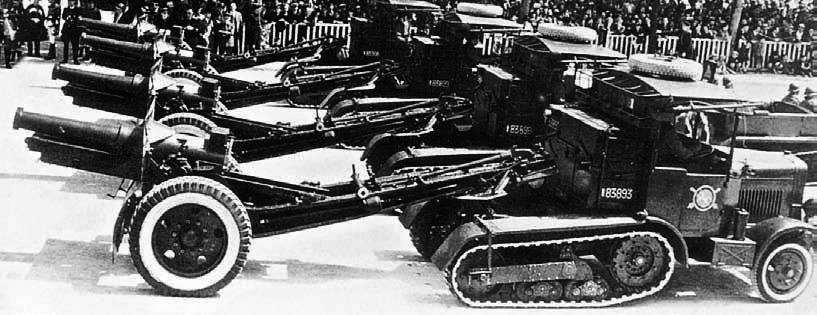 MCG 4 in a 1939 military parade
MCG 4 in a 1939 military parade.
See above for the operational assignation. Depending on their type, these vehicles were assigned either to artillery bataillons as tractors, at regimental and divisional levels. The ARV (recovery) variants were assigned to light tank batallions still using the Renault FT in 1939, one per platoon. It was too weak for more modern Hotchkiss or Renault R35/39s. They played their role as intended, albeit the chaos caused by the speed of the German advance left many stranded without orders or gasoline.
German Versions
After France's surrender, SOMUA MCG and MCL half-tracks were captured and at first pressed in service under the name Leichter zugkraftwagen S307 (f) for towing German artillery and transport equipment. When Baukommando Becker started working on these in 1943, they were fitted a more or less standardized sloped armor mor eor less inspired by the one on the
SdKfz.251, and declined as troop carrier or tank destroyer. Major Alfred Becker's workshop (Baustokommando Becker) converted these available vehicle to fill a variety of roles for the reconstituted 21st Panzer Division, after its destruction in North Africa. Probably the best known was an armoured rocket launcher with an 8 cm Raketen-Vielfachwerfer, self-propelled mortar with a 8 cm Reihenwerfer multiple mortar array and tank destroyer version with a 7.5 cm Pak 40 anti-tank gun.
S307(f)
 MCG recovery in Lussinpiccolo, 1943
MCG recovery in Lussinpiccolo, 1943
Original French tractor with minor modifications
Mittlere Schützenpanzerwagen S307(f) (m.SPW S307(f))
Troop Transport.
Pionier-Panzerwagen auf Fahrgestell S 307(f)
Engineers vehicle.
8cm Reihenwerfer auf SPW Somua S307(f)
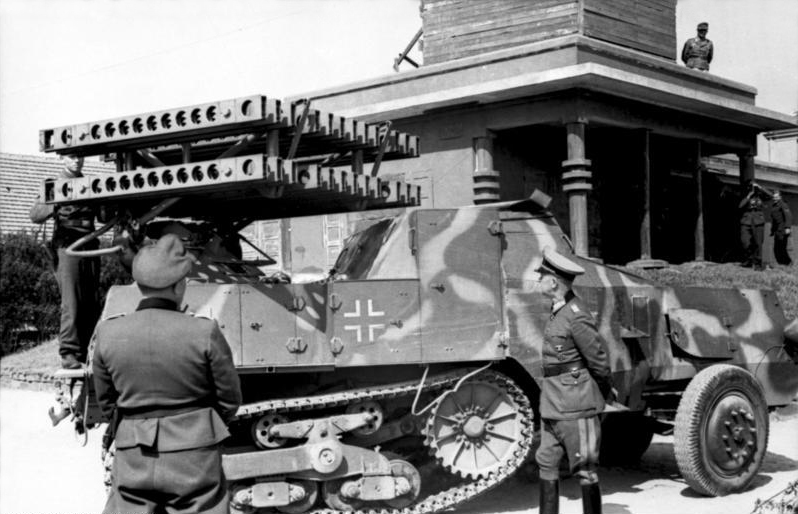 Such vehicle in use close to Rivabella casino in Normandy, June 1944.
Such vehicle in use close to Rivabella casino in Normandy, June 1944.
Self-propelled mortar, 36 converted 1943. They used a 16 mortar barrel in two rows, French Brandt 81.4 mm model 27/31 models, fully rotatably mounted at the rear with a +40-+90°. Deployed in 21. Panzer-Division (Rgt.Einh./Pz.Gren.Rgt. 125 and Rgt.Einh./Pz.Gren.Rgt. 192, 4 each.) And 716. Infantry Division (Art.Rgt. 1716) active in the summer of 1944.
7,5cm Pak40 (Sf) auf SPW S307(f)

Antitank variant, 16, or 72 conversions depending on the source, carried out by Baukommando Becker. Crew 3-4 men. Not very successful. It seems for some sources at first 72 were converted, but 48 were later converted for ammunition supply as Munitions Zugkrafwagen auf SPW S307 (f), leaving 24 vehicles in their AT role in 1944 in the 21st PzD, double that of the minimal figure of 12, half this total.
Munitions Zugkrafwagen auf SPW S307(f)
Ammunition vehicle
8 cm Raketenwerfer Somua MCL(f)
An unknown number of Mittlere Schützenpanzerwagen S307(f) were converted by Baukommando Becker into rocket-launching vehicles, after similiar conversions of the Sd.Kfz. 4 Maultier. This vehicle carried 12 rails for firing 48 rockets. Like the Sd.Kfz. 4/1 Panzerwerfer, it had ten 150 mm rocket launcher tubes as well in alternative.
Gallery
Illustrations of the Somua MCG
 Somua MCG, basic tractor
Somua MCG, basic tractor
 MCG Tractor with Tarpaulin
MCG Tractor with Tarpaulin
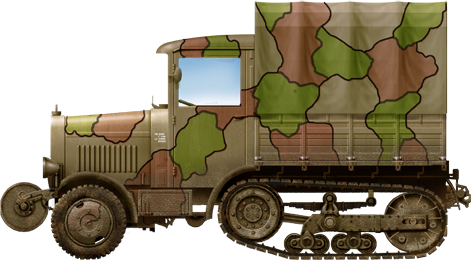 MCG Camouflaged 1929
MCG Camouflaged 1929
 MCG Camouflaged 1939
MCG Camouflaged 1939
Photos
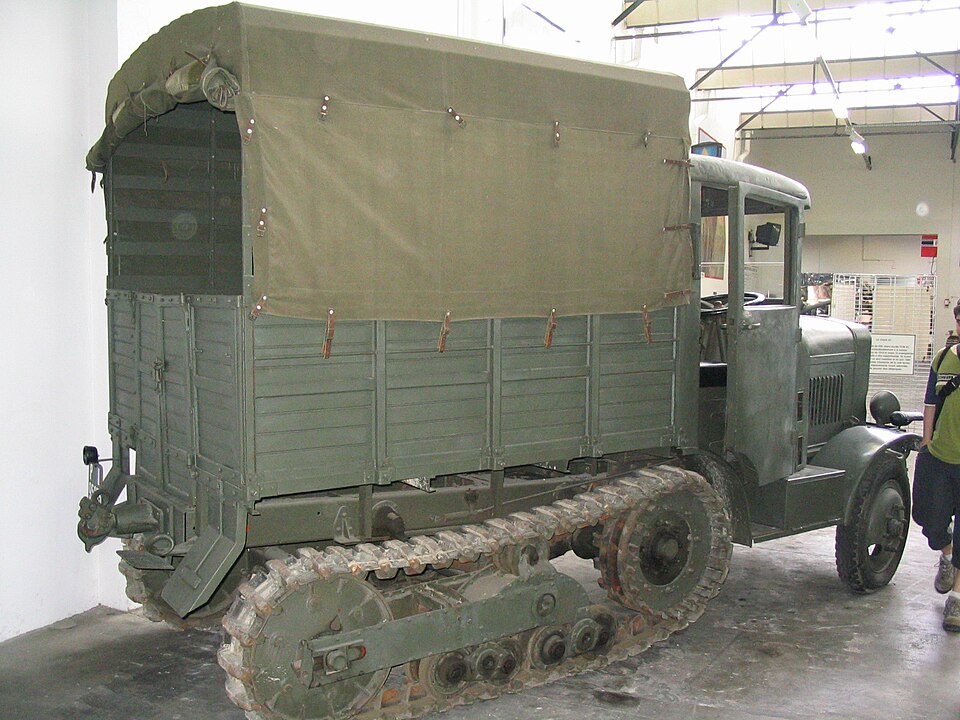 At Saumur
At Saumur
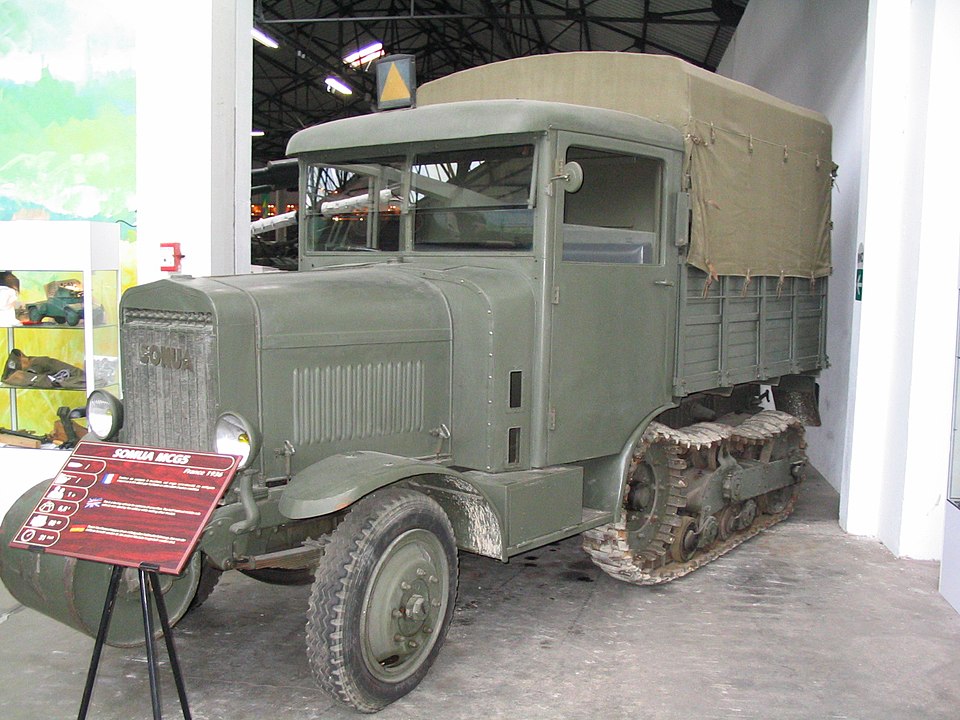 At Saumur
At Saumur
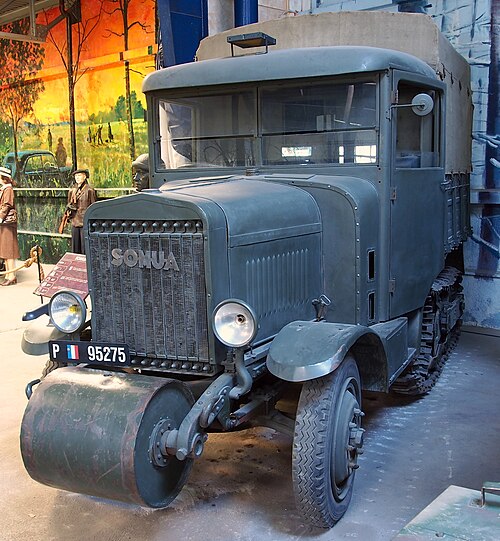 At Saumur
At Saumur
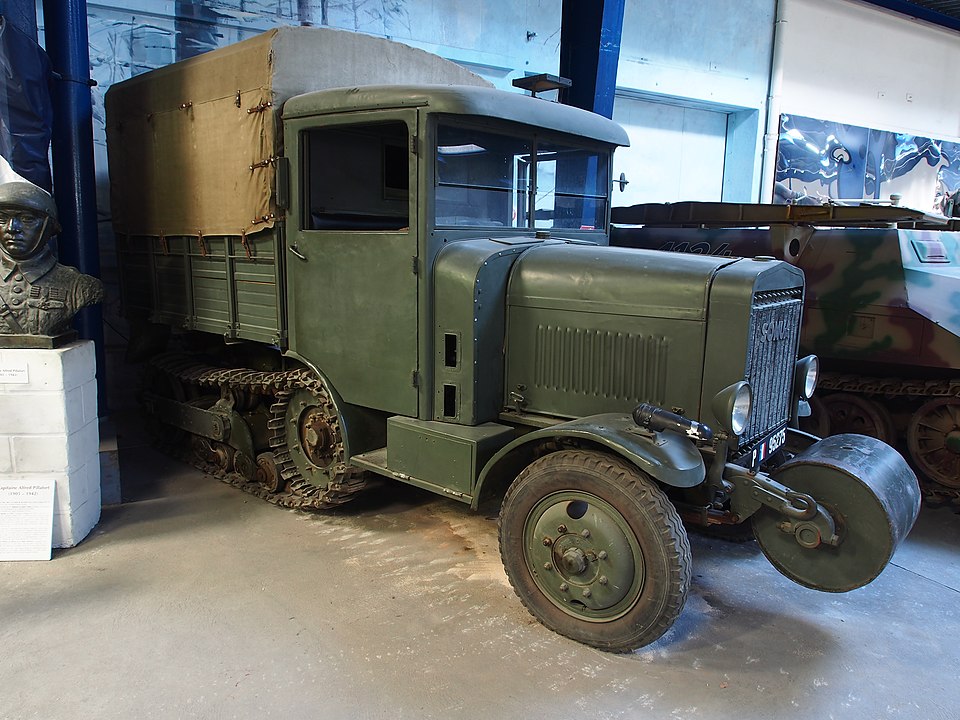 At Saumur
At Saumur
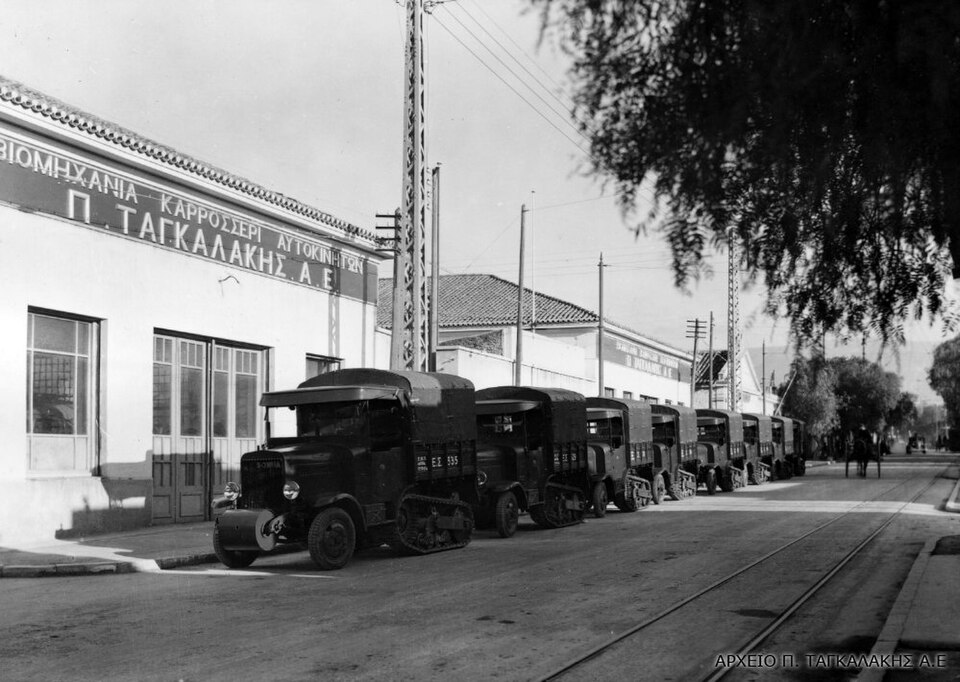 Greek SOMUA MCG at Tagkalakis
Greek SOMUA MCG at Tagkalakis
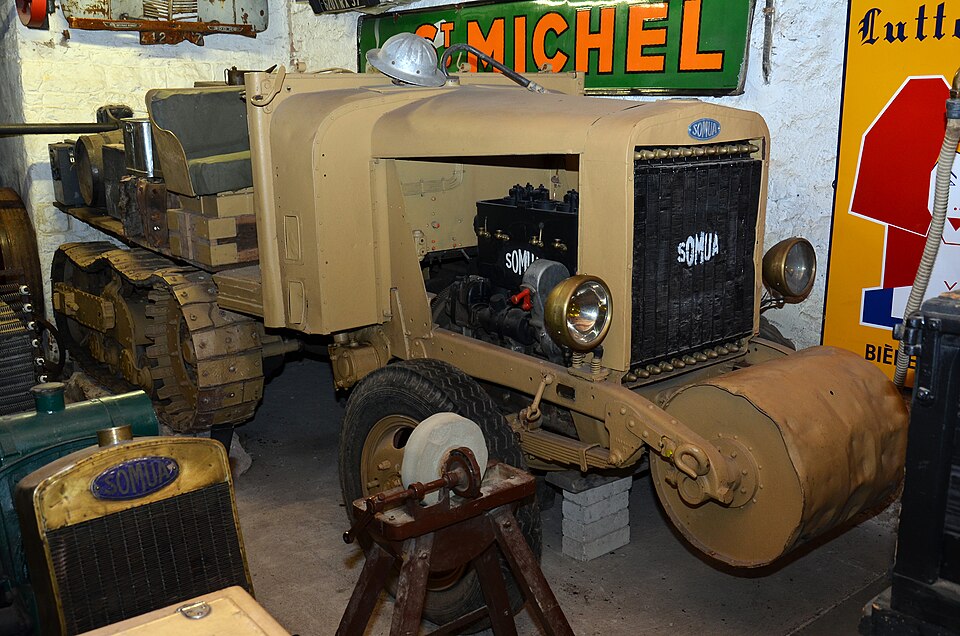 MCH at Marxell Museum
MCH at Marxell Museum
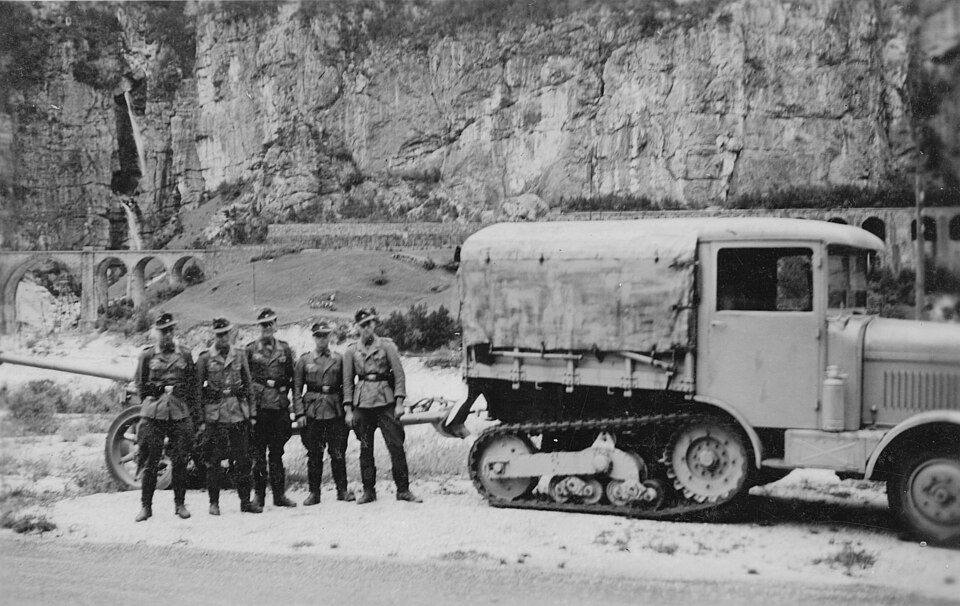 S307(f) Towing a PAK-40 AT gun in northern Italy, 1944
S307(f) Towing a PAK-40 AT gun in northern Italy, 1944
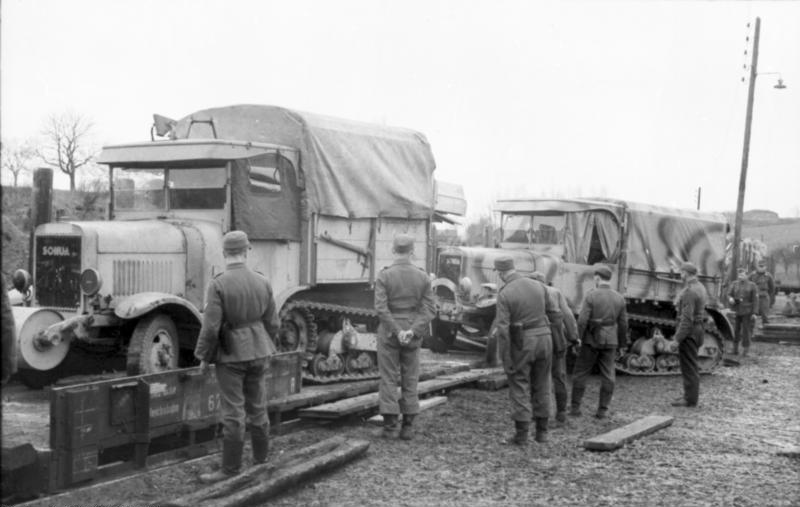
Links/Src
Francois Vauvillier, Jean-Michel Touraine, Jean-Gabriel Jeudy
Zervan.fr 2e G.M. les semi-chenillés de prise
Recensement des véhicules Kégresse : Kegresse.dk. The Kegresse Register (PDF)
Jean-Denis G.G. Lepage, German Military Vehicles of World War II : An Illustrated Guide to Cars, Trucks, Half-Tracks, Motorcycles, Amphibious Vehicles and Others, McFarland, 2007, p. 161 et 163.
Pierre-François Aujas, « La DCA légère sur tous terrains de l'armée de l'air », Blindés & Matériel, no 86, janvier 2009, p. 48-53.
Stéphane Bonnaud et Régis Potié, « Le 22e BCC au combat, 1939-1940 », Blindés & Matériel, no 108, avril 2014, p. 79.
John Carroll, Peter James Davies, Complete Book Tractors and Trucks, Hermes House, 2007, p. 56.
David Burgess-Wise, The Illustrated encyclopedia of automobiles, Londres, New Burlington Books, 1979
Atlas des camions français : l'ère des grands routiers, Issy-les-Moulineaux, Éd. Glénat, 2007
Walter J. Spielberger - Beute-Kraftfahrzeuge und -Panzer der deutschen Wehrmacht, Motorbuch Verlag Stuttgart, 2nd edition, year of publication 1992
symogih.org
commons.wikimedia.org
fr.wikipedia.org wiki SOMUA_MCG
daguerre.fr
dws-xip.com
loutan.net
kfzderwehrmacht.de
quartermastersection.com
esistoire.fr/
1-72.forumgratuit.org
SPAAG version
Tracteur de piece de 155 CS Somua
panzer-bau.de
de.wikipedia.org
histopic.net camo and units
armedconflicts.com 7-5-cm-Pak-40
old.axishistory.com
armedconflicts.com 8-cm-Reihenwerfer
reddit.com footage Rommel converted AT half track